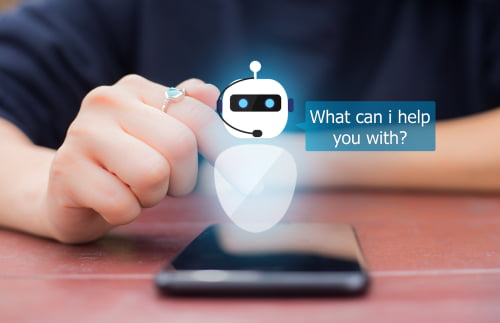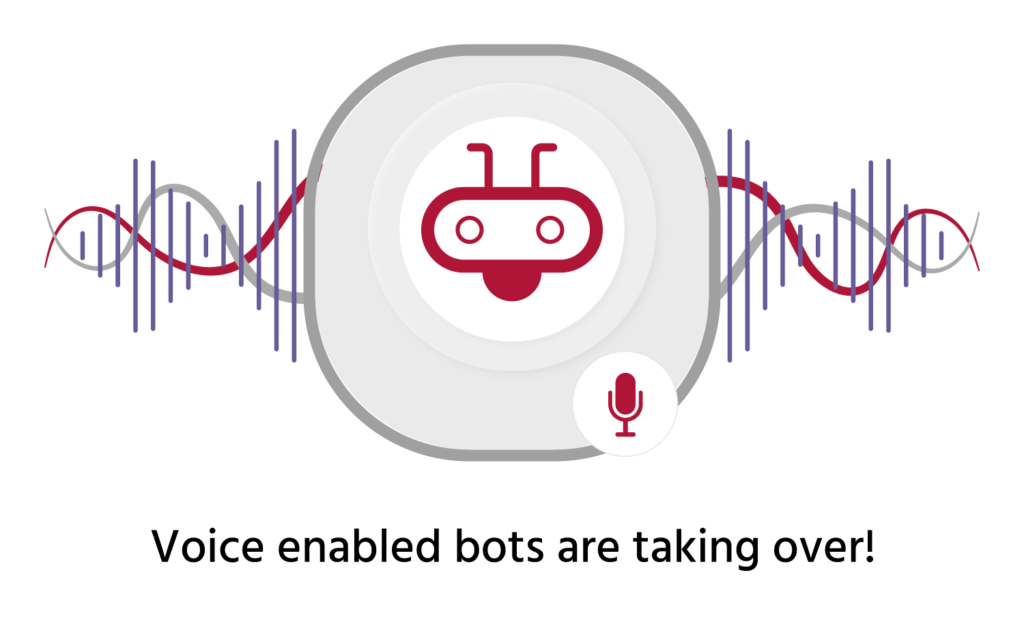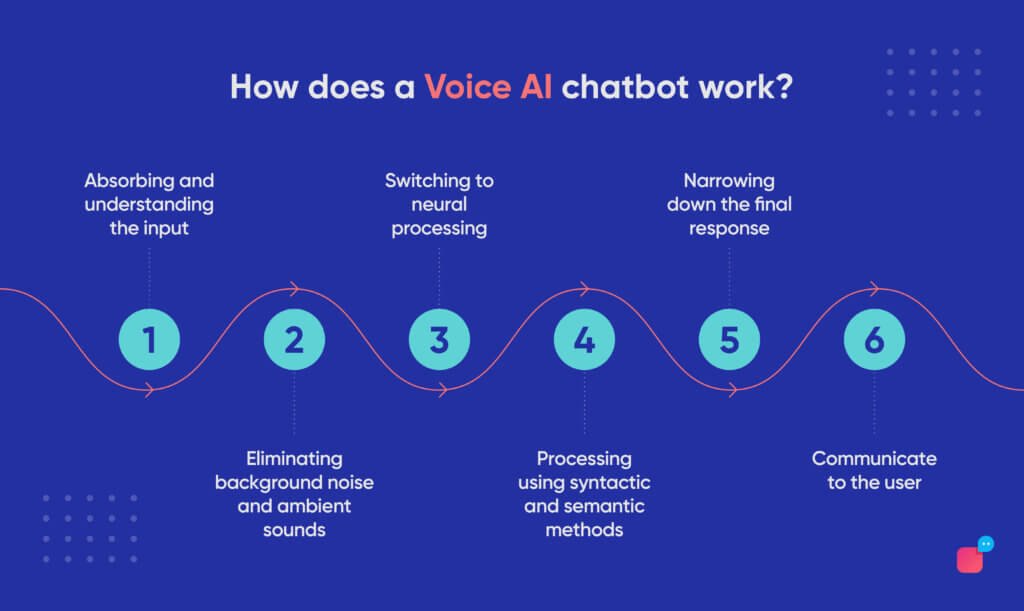In this article, we will explore the fascinating advancements in voice technology and the rise of voice-activated chatbots. As our world becomes more connected and technology continues to evolve, voice-activated chatbots are revolutionizing the way we interact with machines. From virtual assistants like Siri and Alexa to customer service chatbots, voice-activated technology has become an integral part of our daily lives. But what lies ahead for this rapidly expanding field? Join us as we uncover the future possibilities and potential challenges of voice-activated chatbots and the exciting developments that await us.

Voice-Activated Chatbots
Chatbots, also known as virtual assistants or conversational agents, are computer programs designed to simulate human conversation through artificial intelligence. They have become increasingly prevalent in recent years, revolutionizing the way businesses interact with their customers. Chatbots are traditionally text-based, with users typing in their queries and receiving automated responses. However, there has been a notable shift towards voice-activated chatbots, which utilize voice recognition technology to provide a more seamless and intuitive user experience.
Definition of Chatbots
Chatbots are computer programs that use artificial intelligence to simulate human conversation. They are designed to understand natural language and respond to user queries effectively. Text-based chatbots have been widely used in various industries, providing automated support, answering frequently asked questions, and facilitating customer interactions. Voice-activated chatbots build upon this concept by allowing users to interact with the technology through spoken commands.
Evolution of Chatbots
Chatbots have come a long way since their inception. The early versions relied on predefined scripts and simple pattern matching to provide responses. However, advancements in artificial intelligence and natural language processing techniques have made chatbots more intelligent and capable of understanding complex queries. With the rise of voice recognition technology, chatbots have become even more sophisticated, providing a more natural and conversational user experience.
Introduction of Voice Activation
Voice activation has become an integral part of our everyday lives, thanks to the proliferation of smart speakers and virtual assistants like Amazon’s Alexa, Apple’s Siri, and Google Assistant. These voice-based technologies have paved the way for voice-activated chatbots, bringing a new level of convenience and accessibility to users. By simply speaking their queries or commands, users can interact with chatbots in a more natural and efficient manner.

Benefits of Voice-Activated Chatbots
Voice-activated chatbots offer several advantages over their text-based counterparts. These benefits include enhanced user experience, improved accessibility, and time-saving convenience.
Enhanced User Experience
Voice-activated chatbots provide a more natural and conversational user experience. By eliminating the need for typing, users can engage with the chatbot in a more intuitive and hands-free manner. The use of voice recognition technology allows for a more interactive and efficient conversation, making the overall experience more enjoyable for users.
Improved Accessibility
Voice-activated chatbots have the potential to improve accessibility for individuals with disabilities. People with visual impairments or motor impairments may find it challenging to use traditional text-based chatbots. Voice activation eliminates these barriers, allowing users to interact with chatbots using their voice, regardless of any physical limitations they may have.
Time-saving Convenience
Voice-activated chatbots save users valuable time by eliminating the need for typing. Users can simply speak their queries or commands, receiving instant responses or actions from the chatbot. This can be particularly beneficial in situations where users need quick information or assistance, such as when multitasking or on the go.
Applications of Voice-Activated Chatbots
Voice-activated chatbots have a myriad of applications across various industries. Some of the key applications include virtual assistants, customer support, and e-commerce.
Virtual Assistants
Voice-activated chatbots can serve as virtual assistants, helping users with a wide range of tasks. They can provide personalized recommendations, schedule appointments, set reminders, and answer general knowledge questions. By leveraging voice recognition technology, virtual assistants can offer a more natural and conversational interaction, closely emulating the experience of talking to a real person.
Customer Support
Voice-activated chatbots are increasingly being used in customer support roles to provide instant assistance to users. They can handle common customer queries, direct users to the appropriate resources, and even help troubleshoot technical issues. By leveraging voice recognition technology, voice-activated chatbots can provide a more personalized and efficient support experience, enhancing customer satisfaction.
E-commerce
Voice-activated chatbots are also gaining traction in the e-commerce industry. They can assist users in finding products, placing orders, and providing personalized recommendations based on user preferences. By integrating with e-commerce platforms, voice-activated chatbots offer a seamless shopping experience, allowing users to make purchases through voice commands.

Challenges and Limitations of Voice-Activated Chatbots
While voice-activated chatbots offer numerous benefits, they also come with their own set of challenges and limitations. Some of the key challenges include speech recognition accuracy, language and dialect variations, and contextual understanding.
Speech Recognition Accuracy
Speech recognition accuracy is crucial for the success of voice-activated chatbots. Even with advancements in technology, speech recognition systems may still struggle to accurately understand user commands, especially in noisy environments or with users who have speech impairments. Improving speech recognition accuracy is a continuous effort, requiring ongoing research and development.
Language and Dialect Variations
Voice-activated chatbots face challenges when it comes to understanding different languages and dialects. Users from different regions may have varying accents, speech patterns, and cultural nuances, making it challenging for chatbots to accurately interpret user commands. To overcome this, chatbot developers need to invest in training their systems to understand a wide range of linguistic variations.
Contextual Understanding
Understanding the context of a conversation is another significant challenge for voice-activated chatbots. Chatbots need to be able to comprehend user queries in a broader context and provide relevant responses accordingly. This requires advanced natural language processing techniques and deep learning algorithms to accurately interpret user intent and context.
Integration with Voice Assistants
Voice-activated chatbots can be integrated with existing voice assistant platforms such as Amazon Alexa, Apple Siri, or Google Assistant. This integration allows chatbots to leverage the infrastructure and capabilities of voice assistant platforms, providing a more comprehensive voice experience.
Voice-Activated Chatbots as Skills
In the context of voice assistants, chatbots can be developed as skills or actions that can be invoked by users. Users can interact with these chatbot skills by speaking specific commands or prompts, triggering the chatbot’s functionality. This integration allows users to access a wide range of services and capabilities through a single voice assistant.
Voice-Activated Chatbots as Apps
Voice-activated chatbots can also be developed as standalone applications that can be installed on smart devices. Users can interact with these chatbot apps using voice commands, enabling a seamless and hands-free experience. This approach offers more flexibility and customization options for users who may prefer specific chatbot functionalities.
Collaboration between Chatbot Platforms and Voice Assistant Providers
To enhance the overall user experience, collaboration between chatbot platforms and voice assistant providers is crucial. By working together, these platforms can ensure seamless integration, interoperability, and consistency across different voice-activated chatbot applications. This collaboration also opens up opportunities for innovation and the development of new and exciting voice technologies.

Voice Recognition Technology Advancements
Voice recognition technology continues to advance rapidly, contributing to the ongoing improvements in voice-activated chatbots. Some of the key advancements include natural language processing, deep learning algorithms, and adaptive training models.
Natural Language Processing
Natural language processing (NLP) is a branch of artificial intelligence that focuses on the interaction between computers and human language. NLP techniques enable chatbots to understand and process human language in a more meaningful way. By incorporating NLP into voice-activated chatbots, these systems can better interpret user queries and provide accurate and relevant responses.
Deep Learning Algorithms
Deep learning algorithms, such as recurrent neural networks (RNNs) and convolutional neural networks (CNNs), have made significant contributions to voice recognition technology. These algorithms have the ability to learn from large amounts of data and extract complex patterns, enabling more accurate speech recognition and interpretation. By leveraging deep learning algorithms, voice-activated chatbots can continuously improve their performance over time.
Adaptive Training Models
Adaptive training models are designed to improve the accuracy and performance of voice recognition systems. These models leverage techniques such as transfer learning and fine-tuning to adapt their capabilities to specific user contexts and domains. By continuously learning from user interactions, adaptive training models can enhance the accuracy and efficiency of voice-activated chatbots.
Privacy and Security Concerns
As voice-activated chatbots become more prevalent, it is essential to address privacy and security concerns associated with voice data storage and protection.
Voice Data Storage and Protection
Voice-activated chatbots rely on voice data collected from users to provide accurate responses and improve their performance. It is crucial for organizations to handle this data securely and in compliance with privacy regulations. Implementing robust data protection measures, encryption techniques, and secure storage systems can ensure the confidentiality and integrity of voice data.
Biometric Security Measures
Voice recognition technology has the potential to contribute to biometric security measures. Voiceprints, which are unique to each individual, can be used as a form of authentication or identification. However, it is crucial to ensure that these biometric data are securely stored and protected to prevent unauthorized access or misuse.
Reducing Vulnerabilities
As voice-activated chatbots become more sophisticated, it is imperative to address vulnerabilities and potential misuse. Organizations should implement robust security measures to prevent attacks such as voice spoofing or manipulation. Continuous monitoring, regular security updates, and collaboration with cybersecurity experts can help reduce the vulnerability of voice-activated chatbots.

Ethical Implications and Guidelines
The development and deployment of voice-activated chatbots raise ethical considerations that need to be addressed to ensure responsible and unbiased use.
Data Privacy and Consent
Organizations should prioritize data privacy and obtain user consent when collecting and processing voice data. Users must be informed about how their voice data will be used, stored, and protected. Clear and transparent privacy policies should be in place to build trust and ensure compliance with legal and ethical obligations.
Transparency and Disclosure
Voice-activated chatbots should be transparent about their identity and purpose. Users should be made aware that they are interacting with a chatbot and should be informed about the limitations and capabilities of the system. Clear disclosure can help avoid confusion or potential misuse of chatbot functionalities.
Avoiding Bias and Discrimination
Developers should take precautions to ensure that voice-activated chatbots do not exhibit biased or discriminatory behavior. This requires careful training and testing to identify and mitigate potential biases in the system. Regular audits and reviews can help maintain fairness and avoid perpetuating societal biases or stereotypes.
Voice-Activated Chatbots in Everyday Life
Voice-activated chatbots have the potential to transform various aspects of everyday life, including smart homes, healthcare assistance, and educational tools.
Smart Homes and IoT Integration
Voice-activated chatbots can be integrated into smart home systems, enabling users to control various connected devices using voice commands. Users can adjust lighting, temperature, and security settings, or even order groceries and control entertainment systems. The seamless integration of voice-activated chatbots with the Internet of Things (IoT) offers a more streamlined and intuitive smart home experience.
Healthcare Assistance
Voice-activated chatbots can provide valuable assistance in the healthcare industry. They can help individuals monitor their health, remind them to take medications, or provide information about symptoms and treatments. Additionally, chatbots can help healthcare professionals access relevant medical information, reducing administrative tasks and allowing for more focused patient care.
Educational Tools
Voice-activated chatbots have the potential to enhance educational experiences. They can assist students in finding information, answering questions, and providing personalized learning recommendations. Chatbots can also facilitate language learning, allowing users to practice speaking and listening skills in a conversational manner. By integrating voice-activated chatbots into educational tools, learning becomes more engaging and interactive.
Future Trends in Voice-Activated Chatbots
Voice-activated chatbots are continually evolving, and several exciting trends are shaping the future of this technology.
Multilingual Capabilities
The ability to understand and respond in multiple languages is an emerging trend in voice-activated chatbots. As businesses operate on a global scale, multilingual chatbots can cater to a diverse user base, breaking down language barriers and ensuring inclusivity.
Emotion and Sentiment Recognition
The integration of emotion and sentiment recognition in voice-activated chatbots can enhance the user experience further. Chatbots capable of understanding and responding to users’ emotions can provide more personalized and empathetic interactions. This development has significant implications for customer support, mental health assistance, and social interactions.
Improved Contextual Understanding
Advancements in natural language processing and deep learning algorithms will continue to improve the contextual understanding capabilities of voice-activated chatbots. Contextual understanding allows chatbots to interpret complex queries, follow conversations across multiple interactions, and provide more accurate and relevant responses. This improvement paves the way for more sophisticated and realistic interactions with voice-activated chatbots.
The rise of voice-activated chatbots represents an exciting advancement in voice technology. By leveraging voice recognition technology, chatbots can offer enhanced user experiences, improved accessibility, and time-saving convenience. The applications of voice-activated chatbots span various industries, from virtual assistants to customer support and e-commerce. However, voice-activated chatbots also face challenges such as speech recognition accuracy, language variations, and contextual understanding. These challenges can be addressed through advancements in voice recognition technology, collaboration with voice assistant providers, and the development of adaptive training models. Privacy and security concerns, as well as ethical implications, must be considered to ensure responsible and unbiased use of voice-activated chatbots. Voice-activated chatbots have the potential to impact everyday life in areas such as smart homes, healthcare assistance, and education. Looking ahead, future trends in voice-activated chatbots include multilingual capabilities, emotion and sentiment recognition, and improved contextual understanding. With ongoing advancements and innovations, voice-activated chatbots are poised to play a prominent role in the future of voice technology.

